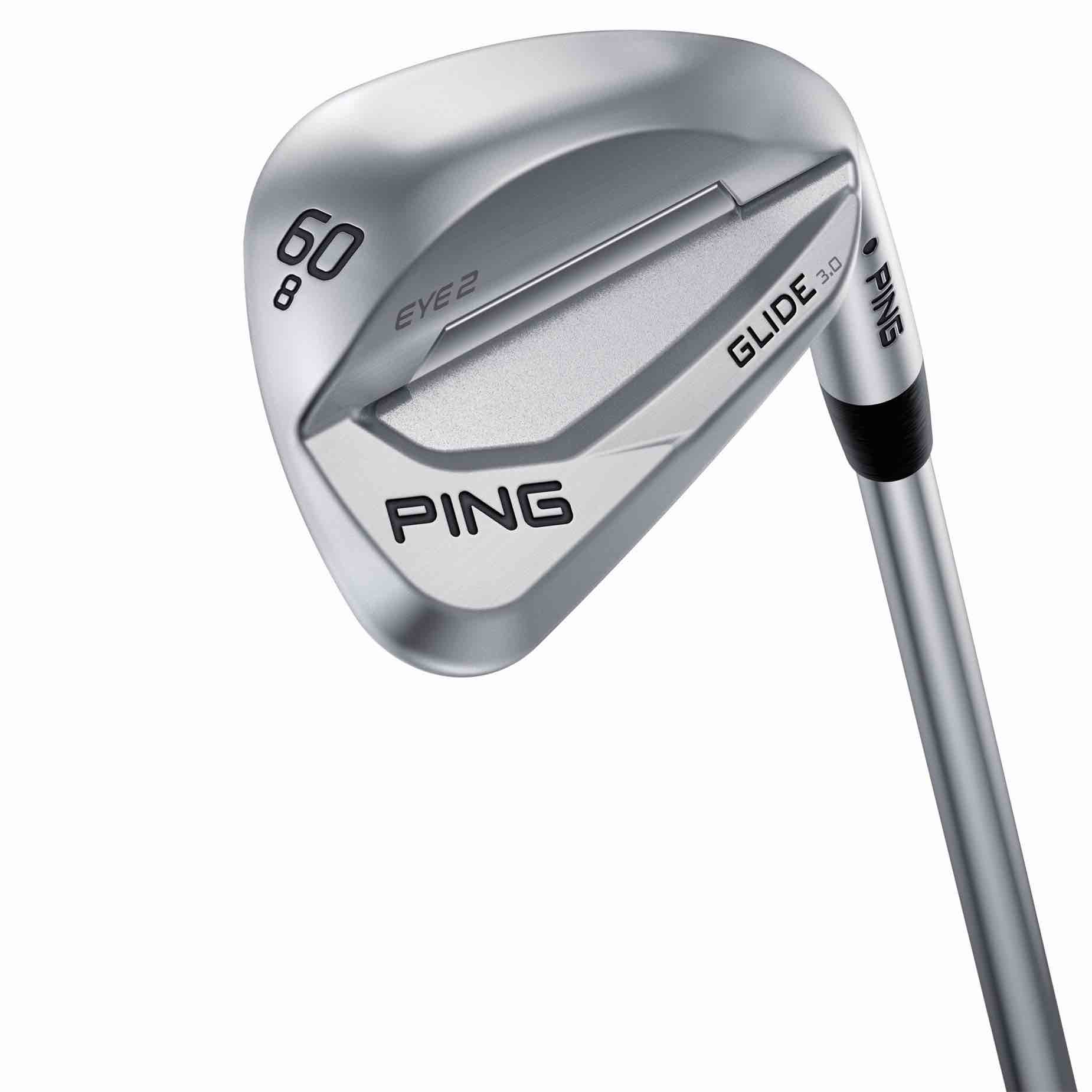Ping’s Glide 3.0 wedges debuted on tour last month at the Rocket Mortgage Classic, and Nate Lashley won with a 60-degree version in his bag.
This week, the company formally unveiled the clubs. More than a cursory follow-up to the company’s Glide 2.0 line, the 3.0 is a re-imagining of the wedge, where nearly every component of the club has been redesigned to create a higher-spinning, more forgiving, lighter wedge with multiple sole grind options.
The four grinds are the thin sole, wide sole and standard sole, along with an Eye2-inspired option. To enhance feel, the wedges use a multi-material construction that combines a stainless-steel head with a large elastomer insert in the rear cavity that also serves to expand perimeter weighting for more forgiveness.
At address, slightly more offset has been provided due to tour-player input, with the goal of creating a more appealing look. In the wide sole model, the sole has been changed to be much wider with a different bounce profile to provide more separation between the standard sole and the wide sole. The wide sole model is now wider in the middle and toe sections and has a higher bounce profile.

Ping aficionados will be drawn to the Eye2 model, with its hallmark high-toe design of nearly 40 years ago. The club matches the original Eye2 SW sole and face profiles and narrow hosel transition for better bunker performance.
“We scanned some original Eye2’s and made the current Eye2 to match,” said Dr Paul Wood, Ping’s vice president of engineering. “That helped the offset transition and the top rail shaping along with the high toe shaping and shaping of the leading edge, that starts with a tight radius near the heel and then softens as it moves towards the toe.”
Of course, no wedge line can be talked about without discussing spin creation. In the Glide 3.0, “wheel-cut” grooves produce a sharper edge radius, which is designed to deliver greater interaction with the ball at impact, thus creating more friction and more spin. The grooves in the lower-lofted wedges (46, 50 and 52 degrees) have a 20-degree sidewall and an edge radius of .005 of an inch for full-shot performance. The higher-lofted clubs (54, 56, 58 and 60 degrees) have a 28-degree sidewall and .004 of an inch edge radius designed to produce more spin, especially on short-game shots with a half-groove at the bottom of the face. These groove specs are the same as on the Glide 2.0, and the half-groove was first introduced on the Glide 2.0 Stealth.
Attention also was paid to the shaft and grip, which have been lightened by five and six grams, respectively. Despite being lighter, the Dyla-wedge Lite grip is actually three-quarters-of-an-inch longer than a traditional grip and features a reduced taper, allowing golfers to choke down more easily for versatility and trajectory control. The Ping Z-Z115 wedge shaft is made by Nippon and is engineered with a lower balance point closer to the tip to provide lower launch with more control (although a host of aftermarket shaft options are available at no upcharge). Seventeen sole grind/loft/bounce options offer plenty of choices for gapping and fitting to swing and turf conditions. The wedges also are available in 10 colour codes (lie angle), with black being standard.
AU RRP: $270 per club w/steel shaft; $300 per club w/graphite shaft




